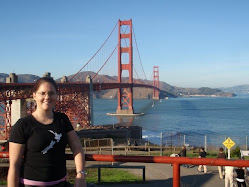
This was actually really cool. Its located near the city by the Thames River. Is so full of history like you wouldn't believe. I totally recommend going to see it and if you can, buy tickets in advance as I waited about 1/2 and hour in a VERY slow moving line in the sun.
I recommend doing the Beefeaters tour, as they are funny and more interesting than maybe a tape recorded tour thingee (can't remember what they are called). I would allow a couple of hours, as I sorta went at the end of the day and missed a room, but saw most everything else.

My highlight would have been the crown jewels (a scepter in there has one of the biggest diamonds in the world). The Beefeaters were quite cool as well, they actually live in the tower compound.

Her Majesty's Royal Palace and Fortress, more commonly known as the Tower of London (and historically as The Tower), is a historic monument in central London, on the north bank of the River Thames. It is located within the London Borough of Tower Hamlets and is separated from the eastern edge of the City of London by the open space known as Tower Hill.
The Tower of London is often identified with the White Tower, the original stark square fortress built by William the Conqueror in 1078. However, the tower as a whole is a complex of several buildings set within two concentric rings of defensive walls and a moat.
The tower's primary function was a fortress, a royal palace, and a prison (particularly for high status and royal prisoners, such as the Princes in the Tower and the future Queen Elizabeth I). This last use has led to the phrase "sent to the Tower" (meaning "imprisoned"). It has also served as a place of execution and torture, an armoury, a treasury, a zoo, the Royal Mint, a public records office, an observatory, and since 1303, the home of the Crown Jewels of the United Kingdom.
The Tower of London was founded in 1078 when William the Conqueror ordered the White Tower to be built inside the southeast angle of the city walls, adjacent to the Thames.[1] This was as much to protect the Normans from the people of the City of London as to protect London from outside invaders. William ordered the tower to be built of Caen stone, which he had specially imported from France. He appointed Gundulf, Bishop of Rochester, as the architect.
In the 12th century, King Richard the Lionheart enclosed the White Tower with a curtain wall and had a moat dug around it filled with water from the Thames. The moat was not successful until Henry III, in the 13th century, employed a Dutch moat-building technique. This king greatly strengthened the curtain wall, breaking down the city wall to the east, to extend the circuit, despite the protests of the citizens of London and even supernatural warnings, according to chronicler Matthew Paris. Henry III transformed the tower into a major royal residence and had palatial buildings constructed within the Inner Bailey.
It  had been thought that there have been at least six ravens in residence at the tower for centuries. It was said that Charles II ordered their removal following complaints from John Flamsteed, the Royal Astronomer.[5] However, they were not removed because Charles was then told of the legend that if the ravens ever leave the Tower of London, the White Tower, the monarchy, and the entire kingdom would fall (the London Stone has a similar legend). Charles, following the time of the English Civil War, superstition or not, was not prepared to take the chance, and instead had the observatory moved to Greenwich.
had been thought that there have been at least six ravens in residence at the tower for centuries. It was said that Charles II ordered their removal following complaints from John Flamsteed, the Royal Astronomer.[5] However, they were not removed because Charles was then told of the legend that if the ravens ever leave the Tower of London, the White Tower, the monarchy, and the entire kingdom would fall (the London Stone has a similar legend). Charles, following the time of the English Civil War, superstition or not, was not prepared to take the chance, and instead had the observatory moved to Greenwich.
 had been thought that there have been at least six ravens in residence at the tower for centuries. It was said that Charles II ordered their removal following complaints from John Flamsteed, the Royal Astronomer.[5] However, they were not removed because Charles was then told of the legend that if the ravens ever leave the Tower of London, the White Tower, the monarchy, and the entire kingdom would fall (the London Stone has a similar legend). Charles, following the time of the English Civil War, superstition or not, was not prepared to take the chance, and instead had the observatory moved to Greenwich.
had been thought that there have been at least six ravens in residence at the tower for centuries. It was said that Charles II ordered their removal following complaints from John Flamsteed, the Royal Astronomer.[5] However, they were not removed because Charles was then told of the legend that if the ravens ever leave the Tower of London, the White Tower, the monarchy, and the entire kingdom would fall (the London Stone has a similar legend). Charles, following the time of the English Civil War, superstition or not, was not prepared to take the chance, and instead had the observatory moved to Greenwich. Inside the torture chambers of the tower various implements of torture were used such as the Scavenger’s daughter, a kind of compression device, and the Rack, also known as the Duke of Exeter's Daughter.
Inside the torture chambers of the tower various implements of torture were used such as the Scavenger’s daughter, a kind of compression device, and the Rack, also known as the Duke of Exeter's Daughter.Anne Askew is the only woman on record to have been tortured in the tower, after being taken there  in 1546 on a charge of heresy. Sir Anthony Kingston, the Constable of the Tower of London, was ordered to torture Anne in an attempt to force her to name other Protestants. Anne was put on the Rack. Kingston was so impressed with the way Anne behaved that he refused to carry on torturing her, and Henry VIII's Lord Chancellor had to take over.
in 1546 on a charge of heresy. Sir Anthony Kingston, the Constable of the Tower of London, was ordered to torture Anne in an attempt to force her to name other Protestants. Anne was put on the Rack. Kingston was so impressed with the way Anne behaved that he refused to carry on torturing her, and Henry VIII's Lord Chancellor had to take over.
 in 1546 on a charge of heresy. Sir Anthony Kingston, the Constable of the Tower of London, was ordered to torture Anne in an attempt to force her to name other Protestants. Anne was put on the Rack. Kingston was so impressed with the way Anne behaved that he refused to carry on torturing her, and Henry VIII's Lord Chancellor had to take over.
in 1546 on a charge of heresy. Sir Anthony Kingston, the Constable of the Tower of London, was ordered to torture Anne in an attempt to force her to name other Protestants. Anne was put on the Rack. Kingston was so impressed with the way Anne behaved that he refused to carry on torturing her, and Henry VIII's Lord Chancellor had to take over. Lower-class criminals were usually executed by hanging at one of the public execution sites outside the Tower. High-profile convicts, such as Thomas More, were publicly beheaded on Tower Hill. Seven nobles (five of them ladies) were beheaded privately on Tower Green, inside the complex, and then buried in the "Chapel Royal of St. Peter ad Vincula" (Latin for "in chains," making him an appropriate patron saint for prisoners) next to the Green. Some of the nobles who were executed outside the Tower are also buried in that chapel.
Lower-class criminals were usually executed by hanging at one of the public execution sites outside the Tower. High-profile convicts, such as Thomas More, were publicly beheaded on Tower Hill. Seven nobles (five of them ladies) were beheaded privately on Tower Green, inside the complex, and then buried in the "Chapel Royal of St. Peter ad Vincula" (Latin for "in chains," making him an appropriate patron saint for prisoners) next to the Green. Some of the nobles who were executed outside the Tower are also buried in that chapel.  The Crown Jewels have been kept at the Tower of London since 1303, after they were stolen from Westminster Abbey. It is thought that most, if not all, were recovered shortly afterwards. After the coronation of Charles II, they were locked away and shown for a viewing fee paid to a custodian. However, this arrangement ended when Colonel Thomas Blood stole the Crown Jewels after having bound and gagged the custodian. Thereafter, the Crown Jewels were kept in a part of the Tower known as Jewel House, where armed guards defended them. They were temporarily taken out of the Tower during World War II and reportedly were secretly kept in the basement vaults of the Sun Life Insurance company in Montreal, Canada, along with the gold bullion of the Bank of England.
The Crown Jewels have been kept at the Tower of London since 1303, after they were stolen from Westminster Abbey. It is thought that most, if not all, were recovered shortly afterwards. After the coronation of Charles II, they were locked away and shown for a viewing fee paid to a custodian. However, this arrangement ended when Colonel Thomas Blood stole the Crown Jewels after having bound and gagged the custodian. Thereafter, the Crown Jewels were kept in a part of the Tower known as Jewel House, where armed guards defended them. They were temporarily taken out of the Tower during World War II and reportedly were secretly kept in the basement vaults of the Sun Life Insurance company in Montreal, Canada, along with the gold bullion of the Bank of England. The Yeomen Warders of Her Majesty's Royal Palace and Fortress the Tower of London, popularly known as the Beefeaters, are ceremonial guardians of the Tower of London. In principle they are responsible for looking after any prisoners at the Tower and safeguarding the British crown jewels, but in practice they act as tour guides and are a tourist attraction in their own right, a point the Yeoman Warders acknowledge.
The Yeomen Warders of Her Majesty's Royal Palace and Fortress the Tower of London, popularly known as the Beefeaters, are ceremonial guardians of the Tower of London. In principle they are responsible for looking after any prisoners at the Tower and safeguarding the British crown jewels, but in practice they act as tour guides and are a tourist attraction in their own right, a point the Yeoman Warders acknowledge.




No comments:
Post a Comment